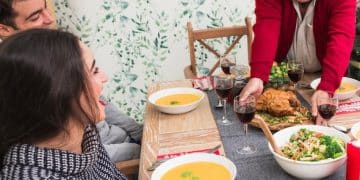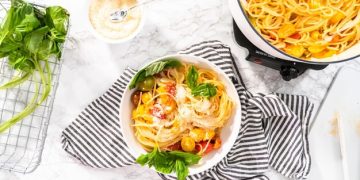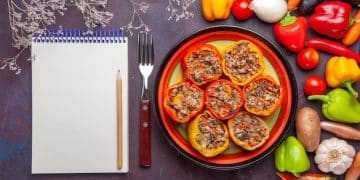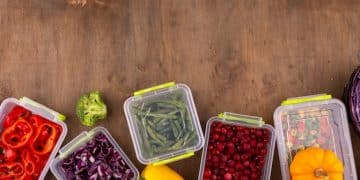Leftover Makeover: Creative Ways to Reduce Food Waste by 15%
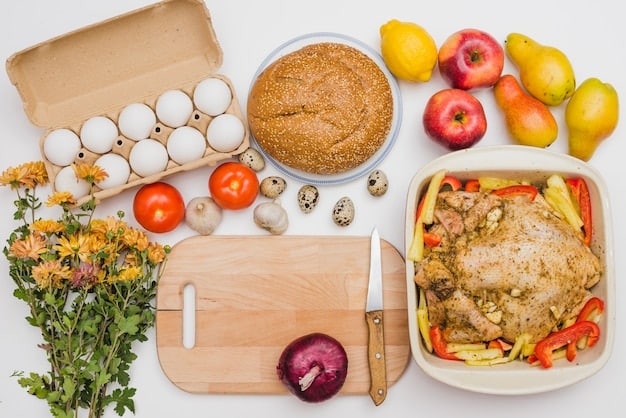
Leftover makeovers are a creative approach to repurposing uneaten food into new, delicious meals, effectively reducing food waste by 15% through smart planning and innovative cooking techniques.
Are you tired of throwing away perfectly good food? Discover a revolutionary approach to leftover makeover: creative ways to use leftovers and reduce food waste by 15%, transforming your kitchen into a hub of culinary innovation and sustainability.
Why a Leftover Makeover? The Imperative of Reducing Food Waste
Food waste is a significant global issue with far-reaching environmental and economic consequences. Embracing a leftover makeover is not just about saving money; it’s about adopting a sustainable lifestyle.
The Environmental Impact
Food that ends up in landfills contributes to greenhouse gas emissions, exacerbating climate change. By reducing our food waste, we can lessen this environmental burden. Reducing food waste also conserves the resources used in food production, like water and energy. Less waste can lead to a smaller carbon footprint.
The Economic Benefits
The average household throws away a significant portion of its grocery purchases each year. Turning leftovers into new meals can dramatically cut down on these costs, effectively putting more money back in your pocket.
- Plan meals effectively to minimize initial waste.
- Store leftovers properly to extend their lifespan.
- Get creative with recipes to transform leftovers into new dishes.
Ultimately, engaging in leftover makeovers is a practical step toward environmental stewardship and household financial health.

Strategic Planning: The Key to Successful Leftover Makeovers
Without a plan, leftovers can quickly turn from potential meals into forgotten waste. Strategic planning involves smart shopping, proper storage, and a willingness to get creative in the kitchen.
Smart Shopping Habits
The best way to minimize leftovers is to buy only what you need. Careful meal planning and realistic grocery lists can prevent overstocking your refrigerator.
Effective Storage Solutions
Proper storage is crucial for extending the life of leftovers. Use airtight containers and label each with the date to ensure freshness.
- Use clear containers to easily identify what’s inside.
- Store leftovers in the refrigerator within two hours of cooking.
- Keep perishable leftovers at a safe temperature (below 40°F).
Adopting these strategies can significantly reduce spoilage and make leftovers more accessible for later use.
Creative Culinary Transformations: Reimagining Common Leftovers
Transforming leftovers into exciting new dishes is where the magic happens. Here are some ideas to get you started, focusing on common leftovers and how to reinvent them.
Roasted Chicken
Shredded or diced, roasted chicken can be transformed into tacos, salads, or creamy chicken pot pie. It’s versatile and easy to repurpose.
Cooked Rice
Leftover rice is perfect for fried rice, rice pudding, or stuffed bell peppers. Its neutral flavor makes it a great base for a variety of dishes.
- Add veggies and eggs for a quick fried rice.
- Sweeten it with milk and cinnamon for a comforting rice pudding.
Roasted Vegetables
Roasted vegetables can be added to frittatas, salads, or pasta dishes. Their smoky flavor adds depth to any meal.
Experiment with different flavor combinations to keep your leftover makeovers exciting.
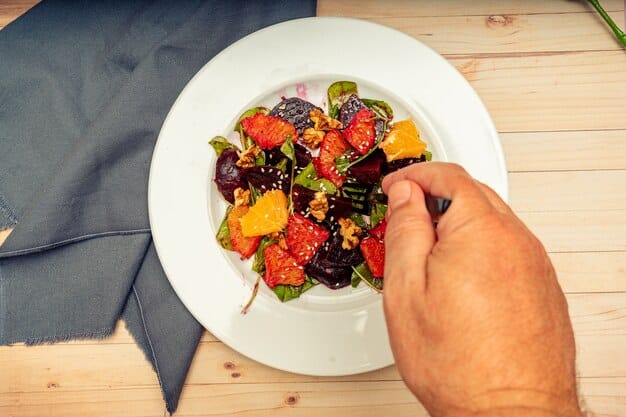
Global Inspiration: Leftover Makeover Ideas from Around the World
Leftover makeovers are a global phenomenon, with cuisines around the world offering inspiration for using up uneaten food. These ideas provide a delicious way to reduce waste and explore new flavors.
Italian Frittata
In Italy, a frittata is an open-faced omelet that’s perfect for using up leftover vegetables, meats, and cheeses. It’s a versatile dish that can be customized to your liking.
Mexican Chilaquiles
Chilaquiles are a traditional Mexican dish made with leftover tortillas, salsa, and cheese. It’s a hearty and flavorful way to use up stale tortillas.
- Top with a fried egg for added protein.
- Add shredded chicken or beans for extra flavor.
Asian Stir-Fry
Stir-fries are a staple in many Asian cuisines and are excellent for using up leftover vegetables, meats, and sauces. The possibilities are endless.
Incorporating these global ideas can add variety to your leftover makeovers and reduce boredom in the kitchen.
Storing and Reheating: Maintaining Quality and Safety
Proper storage and reheating techniques are essential for maintaining the quality and safety of your leftover makeovers. These practices ensure that your efforts result in a delicious and healthy meal.
Safe Storage Practices
Store leftovers in airtight containers within two hours of cooking to prevent bacterial growth. Label containers with the date to keep track of freshness.
Effective Reheating Methods
Reheat leftovers thoroughly to an internal temperature of 165°F (74°C) to kill any potential bacteria. Use a food thermometer to ensure accuracy.
- Use the stovetop for dishes that benefit from even heating and stirring.
- Use the oven for larger portions or dishes that need to retain moisture.
Following these guidelines will help you enjoy your leftover makeovers safely and deliciously.
Measuring Success: Tracking Your Food Waste Reduction
Measuring your progress is important for staying motivated and refining your strategies. Tracking your food waste reduction can provide valuable insights and highlight areas for improvement.
Calculating Waste Reduction
Keep track of the food you throw away each week. Over time, you’ll notice a significant decrease as you become more proficient at using leftovers.
Tools and Apps for Tracking
Several apps and tools can help you monitor your food waste. These resources can provide valuable data and suggestions for reducing waste.
- Use a food scale to measure the amount of food you throw away.
- Keep a log of the types of food you waste most often.
By monitoring your success, you can fine-tune your leftover makeover strategies and maximize your impact.
| Key Point | Brief Description |
|---|---|
| ♻️ Reduce Waste | Turn leftovers into new meals. |
| 💰 Save Money | Use leftovers to cut grocery costs. |
| 💡 Get Creative | Transform leftovers into exciting dishes. |
| 📅 Plan Ahead | Strategize meals to minimize waste. |
Frequently Asked Questions
▼
Store leftovers in airtight containers in the refrigerator within two hours of cooking. Label the containers with the date to keep track of freshness and use them within 3-4 days.
▼
Transform roasted chicken into tacos, leftover rice into fried rice, or roasted vegetables into a frittata. These are all quick, creative options.
▼
Plan your meals in advance, create a detailed shopping list, and stick to it. Avoid impulse purchases and only buy what you need for the week.
▼
Reheat leftovers to an internal temperature of 165°F (74°C) to kill any potential bacteria. Use a food thermometer to ensure accuracy and reheat evenly.
▼
Leftover makeovers reduce food waste, save money, and encourage creative cooking. They promote sustainability and can add variety to your meals.
Conclusion
Embracing the art of the leftover makeover is a powerful way to reduce food waste, save money, and unleash your culinary creativity. By adopting strategic planning, exploring diverse recipes, and prioritizing safe storage, you can transform your kitchen and contribute to a more sustainable world.

